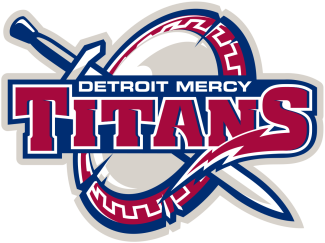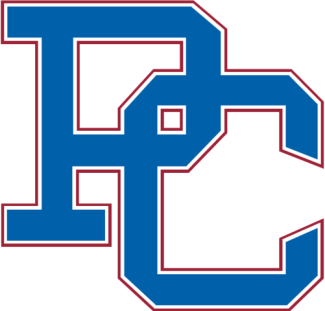11:00 AM
Apr 6



11:00 AM
Apr 6


12:00 PM
Apr 6


12:00 PM
Apr 6


12:00 PM
Apr 6


12:00 PM
Apr 6


12:00 PM
Apr 6


12:00 PM
Apr 6


12:00 PM
Apr 6


12:00 PM
Apr 6


12:00 PM
Apr 6


01:00 PM
Apr 6


03:00 PM
Apr 6


03:00 PM
Apr 6


02:00 PM
Apr 7


04:00 PM
Apr 8


06:00 PM
Apr 8


07:00 PM
Apr 8


12:00 AM
Apr 9


12:00 AM
Apr 9


12:00 AM
Apr 9


12:00 AM
Apr 9


12:00 AM
Apr 9


12:00 AM
Apr 9


12:00 AM
Apr 9


12:00 AM
Apr 9


12:00 AM
Apr 9


12:00 AM
Apr 9


12:00 AM
Apr 9


© 2025 USA Lacrosse. All Rights Reserved.
If it’s closing in on Selection Sunday (three weeks and counting!), it’s time to scrutinize the limitations of the RPI.
First, a refresher course. The RPI is the metric NCAA committees use to sort teams for postseason selection. It isn’t an especially complex formula (25 percent winning percentage, 50 percent opponents’ winning percentage, 25 percent opponents opponents’ winning percentage), which means it isn’t especially difficult to game if a program schedules wisely.
There are two perfectly fair, and separate, overarching criticisms of the RPI. One is that a sample size of 15 games or so isn’t large enough for the formula to spit out a good reading. The other’s more damning: It simply isn’t a method to come up with an accurate reading at all.
It’s also a convenient target in other sports. Basketball (which plays roughly twice as many regular season games as lacrosse) has taken steps toward minimizing the importance of the RPI, and other metrics have been used for comparative purposes.
Having provided that assessment … it’s what the five-man lacrosse committee will use to sort out the field early next month. It’s a major part of the evaluation process, and the reality is the committee will select the eight best at-large profiles. It’s the way it works in other sports, too.
A couple teams are in line to benefit from this process, at least for now. One is Penn, a team with a 6-6 record that nonetheless checks in at No. 6 in the RPI. Another is Villanova, which has been outscored on the season and looked little like a postseason team the last two weeks but is ninth in the RPI. Not-so-coincidentally, both own top-five strength of schedule figures, too.
Both are included in this week’s projection, with Villanova even in line for a first-round home game (those victories over Yale and, yes, Penn possess some value). It might not stay that way ---- neither the Quakers nor the Wildcats have a high-end game left before their respective conference tournaments and will likely see their RPI and schedule strength dip a bit even if they win.
Year after year, the numbers don’t lie on Selection Sunday. For now, the stats say both Philadelphia-area schools would be in the tournament even if they’ve shown some warts over the course of the season.
Records against the top five, top 10 and top 20 and losses to teams outside the top 25 are based on performance against the current RPI rankings, not human polls. Strength of schedule is based on the average RPI of a team’s 10 best opponents. Data courtesy of the NCAA.
|
|
RPI |
SOS |
T5W |
T10 |
T20 |
26+ L |
|---|---|---|---|---|---|---|
| Maryland | 1 | 2 | 1-1 | 3-1 | 6-1 | — |
| Albany | 2 | 16 | 1-0 | 2-0 | 4-0 | UMBC (44) |
| Yale | 4 | 13 | 0-0 | 1-1 | 3-1 | — |
| Loyola | 7 | 9 | 0-1 | 1-1 | 3-3 | — |
| Denver | 12 | 27 | 0-2 | 1-2 | 2-2 | — |
| UMass | 22 | 29 | 0-2 | 0-2 | 1-2 | Army (37) |
| Richmond | 32 | 36 | 0-2 | 0-2 | 1-3 | UMBC (44), Furman (58) |
| Saint Joseph’s | 42 | 66 | 0-0 | 0-0 | 0-0 | St. John’s (43), Fairfield (47), Providence (48) |
| Quinnipiac | 52 | 64 | 0-0 | 0-0 | 1-1 | Holy Cross (39), UMass Lowell (40), Fairfield (47), Hartford (53) |
Best guess with three weeks to go: Maryland will ultimately land the No. 1 seed if it wins out, even if Albany does the same. Strength of schedule and the opportunity for more high-end victories would make the difference, even though the Terrapins lost to Scott Marr’s team at home. … The only change after a bye week for Albany is a weaker strength of schedule. Given how it’s computed (taking only the 10 best opponents), it was bound to fall for the Great Danes as other teams cycled poor opponents out of the calculation….
The biggest game of this week is Albany’s trip to Yale on Sunday. The Bulldogs just dropped 27 goals on Brown, so they’ll be game to run with the Great Danes if the situation warrants it. … Loyola now sits in the top 10 of both the RPI and strength of schedule. The Greyhounds can’t afford to lose out, but they have wiggle room if an at-large bid becomes necessary.
Denver is holding victories over Georgetown and Villanova, and it doesn’t possess a great strength of schedule. The Pioneers have a narrow path to a first-round home game that will require some help. … After doubling up Towson 8-4, UMass further established itself as the favorite in the Colonial. The Minutemen will clinch hosting duties for the league tournament with a victory over Fairfield on Saturday. …
Richmond is the only team in the Southern Conference with a winning overall record. It is also close enough to several potential first-round hosts (Maryland and Duke, chief among them) to save the committee a flight. … Saint Joseph’s will play a top-20 opponent on Tuesday when it meets Penn. … Quinnipiac is the only Metro Atlantic school with an overall winning record, though Detroit and Monmouth are both 6-6.
|
|
RPI |
SOS |
T5W |
T10 |
T20 |
26+ L |
|---|---|---|---|---|---|---|
| Duke | 3 | 4 | 1-0 | 2-2 | 4-2 | — |
| Notre Dame | 5 | 7 | 0-2 | 0-3 | 2-3 | — |
| Penn | 6 | 1 | 1-2 | 1-3 | 3-5 | — |
| Syracuse | 8 | 3 | 2-1 | 2-2 | 3-4 | — |
| Villanova | 9 | 5 | 1-1 | 2-1 | 3-4 | — |
| Johns Hopkins | 10 | 10 | 0-0 | 1-1 | 3-2 | — |
| Cornell | 11 | 14 | 0-2 | 2-2 | 3-2 | Colgate (33) |
| Rutgers | 13 | 15 | 0-1 | 1-2 | 3-2 | Princeton (31), Army (37) |
| Virginia | 14 | 6 | 0-2 | 1-4 | 1-4 | — |
| Bucknell | 15 | 22 | 1-0 | 2-1 | 2-2 | Richmond (32) |
| Penn State | 16 | 11 | 0-1 | 2-2 | 2-3 | — |
| Navy | 17 | 18 | 0-1 | 0-3 | 1-3 | Jacksonville (35) |
| Vermont | 18 | 58 | 0-1 | 0-1 | 0-1 | Stony Brook (34) |
| Brown | 19 | 17 | 0-0 | 2-1 | 2-2 | Quinnipiac (52) |
| Georgetown | 20 | 27 | 0-0 | 1-1 | 1-2 | Marquette (26), Drexel (29) |
| Harvard | 21 | 30 | 0-1 | 0-2 | 2-3 | Holy Cross (39) |
| Robert Morris | 23 | 51 | 0-0 | 0-0 | 1-2 | Bryant (36) |
Duke made a big leap, and the Blue Devils’ metrics finally match how they’ve been perceived all along. They’re a candidate for the No. 1 overall seed if they win out (Marquette, ACC tournament, Boston University). … The two top-20 victories Notre Dame owns are against Denver and Virginia. That’s solid, as are the Irish’s RPI and schedule strength. A top-four seed is still reachable, but only with a good showing in the ACC tournament.
Penn is back on the board after defeating Harvard to reach .500. The Quakers won’t get much help the rest of their regular season schedule (Saint Joseph’s and Dartmouth). … Syracuse is the only team in the country with a pair of top-five victories (Duke and Notre Dame). … Villanova did not impress the last two weeks, but it wasn’t hurt too badly by it. Now, the Wildcats could look superb for the next two weeks (against St. John’s and Providence) and gain nothing for it. …
Even with a loss at Penn State, Johns Hopkins has still played as well as nearly anyone since the start of March. The numbers, though, don’t back that up. The Blue Jays have some work in front of them to secure a first-round home game … Cornell was one of last week’s biggest winners. If the Big Red wins its final two Ivy League regular season games, it will be hard to keep out of the tournament barring conference tournament chaos. …
Another missed opportunity for Rutgers, which lost by a goal at Maryland and has a vital contest against Penn State on Sunday. The Scarlet Knights are in familiar territory this deep into the season. … Virginia needs to win a game and maybe two in the ACC tournament to avoid a third consecutive May on the sideline. … Which is more valuable/costly? A top-five win on the road, or a questionable loss? That’s the argument for and against Bucknell.
Penn State helped itself out a bunch with its victory over Johns Hopkins. Now, it needs to follow up with defeats of Rutgers and Michigan to close out the regular season. … Navy’s ability to be an at-large factor hinges on winning at Syracuse on Saturday. It’s winnable, but how much will the Midshipmen have in the tank after expending so much emotion winning at Army last week. …
Vermont didn’t have much of an at-large case before last weekend, and losing to Stony Brook doesn’t help. … Brown still sits at the periphery of the discussion, but it won’t stand much of a chance at bagging an at-large if it can’t win at Cornell this weekend. … Georgetown moves into the top 20 of the RPI, but there’s no help coming from the Hoyas’ last two regular season games (NJIT and St. John’s). …
Harvard and Robert Morris better win their conference tournaments if they want to play beyond the first weekend in May.

A few reminders on piecing together the bracket. …
* The committee seeds the top eight teams and then assigns the unseeded teams based on geography in an attempt to limit air travel while trying to maintain bracket integrity.
* Conference matchups are to be avoided in the first round.
* If applicable, quarterfinal host schools are funneled into their own site. Hofstra and Navy are this year’s quarterfinal hosts.
* Of the nine automatic qualifiers, the two with the weakest resumes are assigned to the preliminary round game the Wednesday before the first round. At-large teams are not selected for play-in games.
Hempstead, N.Y.
(1) AMERICA EAST/Albany vs. NORTHEAST/Saint Joseph’s-METRO ATLANTIC/Quinnipiac
(8) Villanova vs. Johns Hopkins
Hempstead, N.Y.
(5) Syracuse vs. Penn
(4) IVY/Yale vs. Bucknell
Annapolis, Md.
(3) Duke vs. COLONIAL/UMass
(6) PATRIOT/Loyola vs. Cornell
Annapolis, Md.
(7) Notre Dame vs. BIG EAST/Denver
(2) BIG TEN/Maryland vs. SOUTHERN/Richmond
Last four in: Johns Hopkins, Cornell, Penn, Bucknell
First four out: Penn State, Rutgers, Virginia, Navy
Multi-bid conferences: Atlantic Coast (3), Ivy (3), Big East (2), Big Ten (2), Patriot (2)
Moving in: Penn, Richmond, Saint Joseph’s
Moving out: Bryant, Jacksonville, Rutgers
